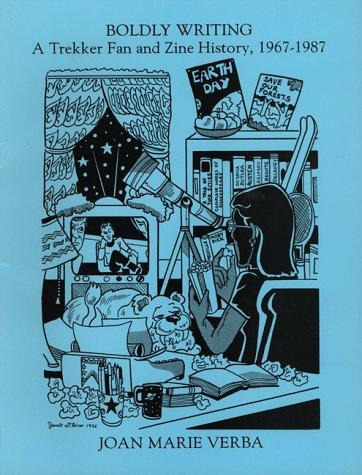The history, culture, and controversies of fanfiction and its writers throughout time. Header image: Pixabay Profile icon: me
Don't wanna be here? Send us removal request.
Text
Fanfic and Its Reputation
We’ve talked a lot about the history of fanfic, where you can get to it, and what happens when authors start “filing off the serial numbers,” but we haven’t really touched on the reputation of fic as much. Even amongst fic writers, fanfiction has been seen as a kind of lesser craft, a stepping stone on the way to “real” writing. It’s also been seen as dangerous, usually by professional authors. Let’s take a look at some of the differing opinions people have on the matter.
In the media
Especially after it was revealed that Fifty Shades of Grey was originally a fanfic, the media has been a bit more interested in fanfiction than it was in the early days of the modern usage of the term. This article is the perfect example. As far as I’ve seen, most mainstream media sees fanfiction as more of a curiosity than anything good or bad.
Amongst professional authors
Opinions on fanfiction vary quite drastically from author to author. Many authors don’t read fanfiction as a general rule to protect themselves from possible lawsuits if their work resembles that of a fan authors, but that doesn't mean they dislike fanfiction. In fact, many professional authors had long careers as fanfic writers before they started publishing professionally. Naomi Novik, founding member of the Organization for Transformative Works and Temeraire penner, was a prolific Master and Commander fan writer (Jamison 2013). Some authors didn’t write fic themselves but support it anyways. J.K. Rowling, for instance, is fine with fanfiction as long as no one publishes it traditionally to make money off of it, the fics are credited to the actual author of the fic, and not the fics aren’t obscene. Anyone who’s trawled a fanfiction archive ever knows people haven’t really been adhering to that last bit.

On the opposite end of the spectrum are authors like Anne Rice, who see fanfiction (even the stuff that no one makes money off of, which is the vast majority of fanfiction) as infringement of intellectual property and grounds for lawsuits and cease-and-desists. Rice passed away in 2021, but her legacy as an anti-fanfiction crusader lives on in infamy. In 2000, Rice posted to her website that she does not allow fanfiction, as the characters are copyrighted and it “upsets [her] terribly to even think about fan fiction with my characters.” The following year, Rice’s lawyers sent an email to Fanfiction.net demanding that they remove any and all fanfiction relating to Rice’s properties unless they wanted a lawsuit. The site complied, and to this day FanFiction.net still doesn’t have any categories for works related to Anne Rice and her characters.

Further Reading
#anne rice#iwtv#lestat#fanfiction#fanfic#fan fiction#jk rowling#naomi novik#organization for transformative works#otw
9 notes
·
View notes
Text
Where to Find Fic: Archives New and Old
As long as the internet has been around, people have been posting fanfiction to their own sites. However, if you want to find more than one fic for a certain fandom or ship, you want to go to an archive. In this iteration of Fic History, we'll be exploring an abbreviated history of fanfiction archives from the beginning of the practice to the present day. Let's dive in!
Older Archives
Older fanfiction archives, even the digital ones, had to be compiled by hand. In the days when fanfiction was primarily circulated by zines or by individuals, archives were the personal collections of fans who managed to get ahold of copies of the works they wanted to collect (Jamison 2013). When fanfiction distribution began moving to the digital realm, archives still had to be compiled by hand, but instead of finding copies of zines, authors would email their fics to archivists, who would upload, code, and link each fic to the appropriate webpages by hand. Archives back in the day were more commonly limited to a single fandom or an even smaller subset of a fandom, such as a specific trope or ship. Additionally, archives were most commonly held on websites, FTP sites, and mailing lists. Since archives during this time weren’t self-serve operations like most are currently, getting permission to archive from authors who had posted fics to non-archive pages was a very important part of archiving etiquette.

Newer Archives
For the purposes of this post, I’m classifying “newer archives” as anything from the general time period around the early 2000’s onward. Nowadays, most fic archives are automated, so authors can upload their own fics without someone else having to do a bunch of coding to get it online. Niche archives for specific fandoms, pairings, tropes, etc. still exist, but from what I’ve seen online, most people prefer to archive sites that collect fics of all shapes and sizes in one big searchable pile. I’m going to explore some of these archives below.

FanFiction.net
While FanFiction.net isn’t exactly new (it was created in late 1998), it’s most likely the first automated multifandom fanfic archive according to FanLore, and was the main multifandom archive of the early 2000’s. When searching for fics on FF.net, you can filter by a lot of different attributes such as word count, characters, genre, and pairings, but the site doesn’t have a tagging system like AO3 does. Many fans stopped using the archive after it purged all NC-17 content in 2002 and 2012.
Archive of our Own
The current darling of the fandom world, created and maintained by the Organization for Transformative Works. The idea for this website was created by BNF Astolat in response to the non-fandom archive startup FanLib, which wanted to earn a profit off of fic. She posted An Archive Of One’s Own to her LiveJournal in May of 2007 (which is where the website got its name), and in mid-November of 2009, the site had entered open beta, allowing anyone on the internet to make an account via a first-come-first-serve invitation system. AO3 is probably most well-liked for its highly comprehensive tagging system where authors can select from already-created tags or create their own, but also other features like built-in bookmarking, easy fic orphaning, and the ability to choose to read a work chapter-by-chapter or all at once, among other features listed here.
Wattpad
The kid sibling of the fanfic archive family. This archive is unique to the other two we’ve discussed so far because it allows authors to upload both fanfiction and original fiction. Fanfic and original fic are also treated the same way in regards to contests hosted by the site and popularity ratings. In terms of content rating, Wattpad separates fic into 13+ All Audiences or 17+ Mature. Wattpad’s most unique feature is the fact that they have an in-house production/publishing company that publishes stories professionally, and creates movies and TV shows based off of popular works such as the After series by Anna Todd.
The wonderful thing about fanfiction archives is that there are so many that there’s something out there that will fit every individual’s needs. I hope this post was informative, and that it helps you find the archive for you!
Happy reading,
-KP
#fanfic#fic#fanfiction#ao3#ff.net#wattpad#usenet#mailing list#livejoural#fan fiction#archive of our own
3 notes
·
View notes
Text
Filing Off the Serial Numbers: Professionally Published FIcs
While texts that we might call fanfiction in the most basic sense of the term have been published in the past (think Wide Sargasso Sea), modern fanfictions have only started to go pro in the past few decades. Fanfiction authors will pull all their fic from the internet, change the character names and other ties to the source media, and publish their works as original fiction. This is a process known in the fannish community as “filing off the serial numbers,” and it’s generated a lot of controversy as more and more fan writers take their work to the professional publishing stage. In this iteration of Fic History, we’re going to explore three of the most well known professionally published fanfictions.
The Mortal Instruments
Cassandra Clare is a household name to any fantasy or YA fiction lover, but you may not know that she also used to be a household name in the Harry Potter fandom. Then writing as Cassandra Claire (peep the i), Clare was a Big Name Fan who was revered in fandom circles for writing The Draco Trilogy, among other fics, which helped to shape how the fandom characterized Draco. She pulled all of her fics from the internet prior to the publishing of City of Bones, but the name of the series that City of Bones belongs to, The Mortal Instruments, shares a name with a Ron/Ginny (yes, incest) fic Clare penned in 2004.

I want to clarify that The Mortal Instruments is not officially a published fanfiction, but fans have noticed similarities between main characters Clary and Jace and Clare’s characterizations of Ginny and Draco, and a passage from one of her Draco fics appears verbatim in City of Bones, save for a few name edits. Due to the popularity of the series and Clare’s past as a fan writer, I chose to include the series here.
Fifty Shades of Grey
Starting in 2009, an author going by the screen name Snowqueens Icedragon began publishing a Twilight BDSM AU fic titled Master of the Universe. It was deleted from the internet in 2011, and in early 2012, Fifty Shades of Grey by E.L. James was published to international acclaim and revilement. These two texts are the same story by the same author. While Fifty Shades generated a lot of stir in the media for being a doctored fanfiction (something many people had never heard of before), it generated a lot of stir in fandom spaces for a few reasons. One, many beta readers had worked on the story when it was a fanfiction, and those readers received none of the profit (Jamison 2013). Two, the book was now essentially mainstream media’s only perception of fanfiction, and given that it was being heavily criticized for being a poorly written inaccurate (in terms of the BDSM stuff) smut-fest, it gave fanfiction a bad name.

The After Series
The most notable and recent example of filing off the serial numbers I can think of is the After series by Anna Todd, known to the internet originally as Imaginator1D. You may know the series now as a best-selling set of novels featuring college students Tessa Young and Hardin Scott that received a set of movie adaptations starting in 2019, but the original iteration of After was a college AU that starred characters Tessa Young and Harry Styles of One Direction fame. Harry’s then bandmates were featured as friends and stepbrothers of Styles, while Tessa is an original character. The After series also received/receives a lot of flak from fannish communities for not being a very high quality example of fanfiction, as well as glorifying what many viewed as an abusive relationship between the two leads.

Publishing your fanfic is forever going to be a touchy subject in fannish communities. Some are completely fine with it, and some fans see it as the ultimate fan sin. As Anne Jamison wrote in Fic (see Bibliography page),
“The fan culture tenet that ‘thou shalt not profit from fanworks’ has been, depending on who you talk to, an almost sacred and inviolate, wholly necessary founding principle of fandom. To others within the same community, it’s only been a necessary evil.”
She also notes that the fact that the term fanfiction doesn’t have one solid definition, and doesn’t actually clarify how close the story is to the material it was based off of. This doesn’t even bring into question the ethical dilemma surrounding profiting off of a fic that beta readers worked on for no cost. All in all, filing off the serial numbers will always be hot button issue in fandom, and I’d love to hear what thoughts y’all might have on it!
Happy reading,
KP
Further Reading:
#mortal instruments#the mortal instruments#cassandra clare#anna todd#after#fifty shades of grey#50 shades of grey#e l james#fanfiction#fanfic#fan fiction#fanfiction history
8 notes
·
View notes
Text
2000's and Beyond: Modern Fic
In this iteration of Fic History, we’re going to be exploring the fic culture in mega-fandoms from the early 2000’s and beyond. That’s a big field to cover, I know, so each section is probably going to be a bit less detailed than usual in order to make things easier to digest. To begin, we’re starting with:
Harry Potter

I think it goes without saying that the HP fandom is probably the fandom of the 21st century. No book series has become so ubiquitous as HP, and there are still more HP fics on FF.net than from any other fandom. Since HP was published when the internet already existed, most of the fandom’s fics were published online, although a few printed fanzines were created. HP fic is also extremely varied, most likely due to the wide cast of characters and length of time covered by canon lore. You could find fic on anything from coffee shop AUs of the Hogwarts founders to explorations of the main trio’s children when they eventually attended Hogwarts. Like most fandoms with a large internet presence, the HP fandom had its own fic sites, some of which were dedicated to specific attributes like certain ships or tropes, but fic was also posted en masse to multifandom archives like FF.net and AO3. In fact, as of 2017, there are still more Harry Potter fanworks on FF.net than any other fandom.
Twilight

If HP is the fandom of the century, Twilight is probably the fandom of the 2000’s decade. At least in the media, Twifans were portrayed as either feral teenage girls or feral middle-age women, but the fandom is actually much more diverse. In terms of fanfiction, it goes without saying that the most famous fic within the fandom is probably Master of the Universe by Snowqueens Icedragon, more commonly known by its profic title of Fifty Shades of Grey. Snowqueens Icedragon, A.K.A. E.L. James, filed the serial numbers off of her fic and sold it as an original piece of fiction to massive critical attention and success. You can read a bit more about Fifty Shades here.
One Direction

This is the odd fandom out of the bunch, as it’s the only one listed that’s completely focused on real person fic, or RPF. According to FanLore, since there isn’t traditional source material to function as a canon to write fic about, canon in the 1D sense consists of “One Direction's members' original appearance on the reality show, plus their concerts, albums, music videos, video diaries, interviews, books, photo shoots, award ceremonies, other television appearances, band members' and families' personal twitter accounts, media gossip, authorized candid photos and selfies, and unauthorized candid photos by paparazzi and fans.”
RPF already has a bad reputation in fandom spaces, but since 1D is an engineered boy band adored mainly by teenage girls (fandom’s least favorite demographic), the 1D fandom reputation is in the pits (Jamison 2013). Despite this, the fandom is still quite large, and produces a lot of fic, especially on Wattpad, where the fanfic series turned profic After by Anna Todd was published from 2013 to 2014. The most popular ship amongst directioners is Larry Stylinson, or Harry/Louis.
Finally, we have
SuperWhoLock

Behind HP, this is probably the largest fandom on the list, simply because it’s actually three fandoms smushed together: Supernatural, Doctor Who, and BBC’s Sherlock. Fans in this fandom are called SuperWhoLockians. This fandom was especially active on Tumblr in the early 2010’s, and while the main form of fanwork was gifsets, lots of fanfic was produced in each fandom individually as well in crossovers. The most popular Supernatural ships were Castiel/Dean (Destiel) and Wincest (Sam/Dean, who are brothers, hence the portmanteau between Winchester and incest), while Sherlock’s most popular was Sherlock/Watson or Johnlock. Doctor Who is different, as each individual reincarnation of the Doctor is considered a different character, so each Doctor has different pairings, usually with their respective companions or the Master. SuperWhoLock has a reputation for being cringy due to member’s repeated hijacking of Tumblr posts with fandom related GIFs, but now that the fandom is much less active, the cringe has turned into a feeling of nostalgia.
There are so many more fandoms I could talk about, which just goes to show how fandom spaces have only exploded in size as time has passed. Even though these descriptions aren’t the most detailed, I hope you found them informative and interesting!
Happy reading,
-KP
#johnlock#wincest#destiel#supernatural#doctor who#david tennant#benedict cumberbatch#martin freeman#sam winchester#deancas#dean winchester#bbc sherlock#harry potter#potterhead#hogwarts#wizarding world#one direction#larry stylinson#twilight#50 shades of grey#bella swan#edward cullen#castiel#fanfiction#fanfic#ao3
10 notes
·
View notes
Text
90's Fic Fandoms: The X-Files and Buffy the Vampire Slayer
This post, we’re exploring the advent of online fandom in the 90’s!
Without further ado,
The X-Files
First premiering in 1993, The X-Files was in a league of its own in the television sphere as it was both a supernatural thriller and a will-they-won’t-they investigative procedural. Well, it was mostly a won’t they since show creator Chris Carter himself was very anti Scully/Mulder (NoRomo). Speaking of the main pairing in the show, The X-Philes (X-Files fans) invented the term “shipping” to describe their support for Scully/Mulder, or any relationship pairing in the show. Thus, the term was shortened to “ship” both as a verb to describe the act of shipping and as a noun to describe a particular romantic pairing. As anyone who is vaguely familiar with fandom culture is aware, the “ship” family of terms is now used across fandom.

Digital fan activity surrounding The X-Files began primarily on Usenet, with two major mailing lists (one for general fan activity and another for creative works) that spawned many others specific to certain subtopics. Over time, this expanded into mailing lists, specialized fic archives, blogs, websites, and more, all dedicated to one show about two FBI agents and the possibility of alien life. Of this fan activity, a large percentage of it was dedicated to fanfiction, and which ships (or lack thereof in the case of NoRomos) were superior. The most popular ship was obviously Mulder/Scully, but other popular pairings include Mulder/Krycek, Mulder/Skinner, and Scully/Skinner. Another unique feature of the X-Philes is that they decidedly did not embrace RPF.
Buffy the Vampire Slayer
The Buffy TV series first premiered in 1997, and like The X-Files, it was unique due to its severe genre bending and role reversals. Buffy was the only show where you could watch horror, high school drama, and supernatural romance all in one place, complete with a tiny blonde valley girl who happened to have immense power and immense responsibility.

In terms of fandom activity, the Buffy fandom was unique because it was one of the first TV fandoms to be active on the internet, and because of the unusually high amount of interaction between the show creators and fans. The official website for the show had an interactive comment space named after the club in Sunnydale, The Bronze, where fans could discuss the show. The thing was, the show’s creators and staff also had access to this page, so fans sharing their opinions and theories were sharing them with the people whose opinions determined the source material, most notably including Joss Whedon himself (Jamison 2013).
At the beginning of the Buffy fandom, the show creators and FOX were fine with the fansites and other fan activities happening on the internet, but as time went on, many fanworks were lost due to the network’s crackdown on fansites in the early 2000’s.
What’s so special about these shows is how hard they work to disrupt the gender norms that are attached to our society to this day. Mulder is the touchy-feely believer, while Scully is the clinical skeptic. Buffy is a stereotypically girly valley girl who is also incredibly strong, dedicated, and competent; all things not normally associated with traditionally feminine girls and women. These traits, plus the unique things fans brought to the table, created the dominant fandoms of the 90’s that shaped fannish culture and activity forever.
Happy reading,
-KP
6 notes
·
View notes
Text
Star Trek: Fic and Fandom
As we explored in the last post, fanfiction has been around for a while, but before Star Trek, it wasn’t really ever in fanzines. Fiction about fans was, but usually not fanfiction in the way that we consider it to be now. In 1967, that all changed for good.

Star Trek had just started airing its second season in September, the same month the first issue of the fanzine Spockanalia. Created by Devra Langsam and Sherna Comerford, the zine was initially meant to be a one-shot, but the second issue was published in April of the following year. It was quickly joined by many, many more zines, each with their own stories and other content.

^ The front cover of Spockanalia Issue #1, featuring Mr. Spock illustrated by Kathy Bushman.
ST-Phile 1 was published January 1968, and the first issue of Warp Nine: A Star Trek Chronicle dropped in February 1969. In June of the same year, Ruth Berman released T-Negative, a zine named for Mr. Spock’s blood type, that would go on to run for 10 years. In Joan Marie Verba’s book Boldly Writing: A Trekker Fan and Zine History, 1967-1987, you can find a comprehensive history of the first 20 years of Star Trek fanzines.

^The front cover of Boldly Writing by Joan Marie Verba.
Star Trek was the first fandom to make fanfiction (as we know it today) an integral, collaborative part of its culture. Prior to ST, this kind of fanfic wasn’t really published in science fiction zines. So many people wrote fanfiction about Star Trek that there were multiple zines dedicated to fic alone (Jamison, 2013).
Not only was Star Trek the first fandom to routinely publish modern fanfiction in fanzines, but it is also home to the first published slash fic, unsurprisingly featuring Kirk and Spock. The story, “A Fragment Out of Time '' by Diane Marchant, was published in the 1974 third issue of the fanzine Grup. It was unique not only because it was most likely the first slash fic, but also because it was initially unclear as to the genders/sexes of the two people having sex in the story. Marchant cleared this up in Grup’s next issue, and it’s now definitively clear that the two characters in the story are Kirk and Spock.

Another groundbreaking fanfic is the Kraith series, which was originally authored by Jacqueline Lichtenberg, co-author of the first published book on media fandom Star Trek Lives!. The Kraith series explored the planet Vulcan and its society, and several other authors helped to write installments of the story over time.
Despite the fact that the original TV series aired its final episode in June of 1969, Star Trek definitely isn’t a dead fandom; new and OG fans are still active and new installments of official Trek media are being released constantly. Just because a fandom is older doesn’t mean it has any less life in it!
Happy reading!
-KP
Further Reading:
The Sandy Hereld Memorial Digitized Media Fanzine Collection
Star Trek: Slash and Suits by Colleigh Stein
#star trek#space#tos#aos#trek#trekkie#kirk#spock#spirk#scifi#fanfiction#fic#slash#K/S#jacqueline lichtenberg#Kraith#diane marchant#joan marie verba#devra langsam#ruth berman#kathy bushman#grup#spockanalia#spock and kirk#Star Trek Lives!#t-negative
10 notes
·
View notes
Text
Pre-fic fic: Fan fiction before fanfiction
Even though the definition of fanfiction as we know it today has only really been a thing since the mid 1960’s, people have been writing what we might consider fanfiction since before the printing press was invented. Dante’s Divine Comedy, which details the author’s idea of what Hell is like (you could call it Bible fanfic if you really wanted to), was published shortly before his death in 1321, as opposed to the roughly 1439 creation date of Gutenberg’s first press.
Good ol’ Willy Shakespeare also wrote a form of fanfiction, but his was a little different. Back in his day, it was incredibly common for playwrights to pull from multiple sources to create their works, including common plotlines and the ideas/inventions of their coworkers and contemporaries. In Shakespeare’s case, historians believe those sources were people like his theatre company The King’s Men and the Ur-Hamlet, which has unfortunately been lost to time. He was able to produce works like this because it was the common practice, and because you made your money putting on the most entertaining plays, not by selling copies of your own intellectual property. Shakespeare may have written more collaboratively than most people believe, but he received the credit because he did most of the actual writing work anyhow (Jamison, 2013).

Did you know that Miguel Cervantes didn’t write the first sequel to Don Quixote? That honor goes to Alonso Fernandez de Avellaneda (a pseudonym), who wrote and published his own sequel to the beloved novel in 1614. It’s unclear as to whether or not this specific instance was the reason, but Cervantes was upset enough about some fan writers to mention it in the dedication to his official sequel (Jamison, 2013), which you can read about here.
Next up is the 1700s and 1800s! Not only did some prominent authors prompt fanfiction of their works due to what some saw as questionable literary choices, some even wrote their own fic. Samuel Richardson corresponded with several fans who were upset at his (at the time) potential writing choices in his book Clarissa, but he was not happy with those of whom wrote their own versions of his works. Middlemarch penner George Eliot wrote fanfiction as a child, similar to the Bronte siblings and Jane Austen. Some authors even published fic after they had become celebrated authors, as is the case with William Makepeace Thackeroy. After he wrote Vanity Fair, Thackeroy wrote his own version of Sir Walter Scott’s Ivanhoe in order to pair the book’s hero with the character Rebecca romantically (Jamison, 2013).

At last, we come to the first formal fandom: Sherlock Holmes. The man of mystery himself has been captivating readers by the thousands since Sir Arthur Conan Doyle started publishing the shorter Holmes stories in The Strand in 1891. Doyle didn’t always want this to be the case, however. After a good 5 or 6 years of writing Holmes and Watson (or as many fans believed, publishing the writings of Watson on his adventures with Holmes), Doyle was tired of coming up with new mysteries to be solved, and worried that he would only be remembered for the characters that he deemed his playthings, less serious than his other endeavors. In order to remedy this, Doyle sent Holmes off of Reichenbach Falls in 1893 and thought he had washed his hands of the whole thing. He was wrong.

People legitimately held funeral marches in the streets for Holmes, complete with black armbands. Newspapers reported on the death as well, as fans worldwide mourned the loss of the great detective. Doyle eventually resurrected Holmes a few years later after publishing a few prequel stories, but the damage had been done, and people began writing parodies and pastiches to fill the deerstalker-shaped hole in their hearts and minds.
Everyone from J.M. Barrie to A. A. Milne wrote a Sherlock pastiche, but some caused confusion as to whether or not they were lost official works of Doyle/Watson himself. One such work was written in 1911 by Arthur Whitaker and was sent to Doyle with a request to collaborate. Doyle told Whitaker that his story was pretty good, and that he should try to get it published after changing the character names, of course (Jamison 2013).

Prior to the 1960’s, the term fan fiction mainly referred to amateur science fiction written by sci-fi fans that was published in zines. However, it also referred to fiction written about science fiction fans by other fans, as is the case with the Fables of Irish Fandom, written by John Berry during the mid 1950s and ‘60s about his group of fandom friends in Belfast. This Belfast Group consisted of science fiction fans John Berry, Walter and Madeline Willis, Bob and Sadie Shaw, James White, and George Charters. Walter Willis and James White had created the fanzines Slant and Hyphen in response to the lack of letter columns (a major way fans communicated before the internet) in the British versions of science fiction magazines. Berry became a part of this group when his job as a police officer brought him to Belfast and he sent a letter to Willis after hearing about a science fiction fan group in the city. Berry was invited to meet Willis, then later the rest of the group. Berry chronicled fictionalized versions of his experiences, which became the Fables of Irish Fandom. All of the group members make appearances as played-up versions of themselves in sensationalized slice-of-life narratives that were published in Irish fanzines from 1954-1965 (Sawyer 2013). They were reprinted by Ken Cheslin during 1998-9, and you can read all of them here in PDF form!

Finally, we come to look at Wide Sargasso Sea, Jean Rhys’ 1966 novel that made waves in the literary world by recontextualizing the narrative of Bertha Mason, Rochester’s mad wife in the attic from Charlotte Brontë’s timeless classic Jane Eyre. In WSS, Bertha’s true name is Antoinette Cosway, and she is a white Creole woman born into a former slave-holding family post Emancipation. The book gives Antoinette/Bertha a life and personality beyond the “crazy secret attic wife” persona she was given in Jane Eyre, and changes Rochester from the victim of Bertha’s madness to one of the main causes behind it. You can read a more in-depth analysis of the book here.

I hope you enjoyed this edition of Fic History, and please let me know if there's anything you think I missed!
Happy reading!
-KP
#fic#fanfic#fanfiction#jane eyre#rochester#belfast#bertha mason#wide sargasso sea#sherlock holmes#john watson#holmes#watson#doyle#arthur conan doyle#charlotte bronte#dante#divine comedy#dante's inferno#dante's divine comedy#jane austen#george eliot
19 notes
·
View notes
Text
Fanfic 101: What on Earth am I Reading?
If you’re reading this post, you’re probably wondering what this “fan fiction” business is, and I don’t blame you for not knowing! Fanfiction, which will henceforth be referred to as fanfic or fic for sake of brevity, is not a traditionally public-facing practice. As defined by the Oxford Dictionary of Science Fiction, fanfiction is “fiction that uses characters or a fictional universe originally created by a professional author or for a television show, movie, etc”. Essentially, it’s when a fan of a certain piece of media writes a story using the world and characters from said media.
Now that you’ve read that, you might be thinking “That’s a really broad definition, KP,” and you’d be absolutely right. Any TV show, movie, or book you can think of probably has a fan following (also known as a fandom), and as such probably has some fanfiction written about it. As much fanfiction as there is, online archives like FF.net and Archive of Our Own (AO3) use tagging systems that make it easy to find a specific kind of story from nearly any fandom, from BBC Sherlock smut to Jane and Mr. Darcy working in a coffee shop in 1993.

In his 1992 book Textual Poachers, Henry Jenkins classifies the 10 ways that an author may write fanfiction of a TV show or other piece of media:
Recontextualization: Fans often write short vignettes (“missing scenes”) which fill in the gaps in the broadcast [or other kind of] material and provide additional explanations for the character’s conduct; these stories focus on off-screen actions and discussions that motivate perplexing on-screen behavior.
Expanding the Series Timeline: Primary texts often provide hints or suggestions about the characters’ backgrounds not fully explored within the episodes. Fan writers take such tantalizing tidbits as openings for their own stories, writing about events preceding the series’ opening [or after the series has ended].
Refocalization: While much of fan fiction still centers on the series protagonists, some writers shift attention away from the programs’ central figures and onto secondary characters, often women and minorities, who receive limited screen time.
Moral Realignment: Some fan stories invert or question the moral universe of the primary text, taking the villains and transforming them into the protagonists of their own narratives.

Genre Shifting: Fans often choose to read the series within alternative generic traditions.
Cross Overs: [These] stories blur the boundaries between different texts.
Character Dislocation: [In these stories,] characters are removed from their original situations and given alternate names and identities.
Personalization: Fan writers also work to efface the gap that separates the realm of their own experience and the fictional space of their favorite programs. "Mary Sue" stories, which fit idealized images of the writers as young, pretty, intelligent recruits aboard the Enterprise, the TARDIS, or the Liberator, constitute one of the most disputed subgenres of fan fiction.
Emotional Intensification: Because fan reading practices place such an importance on issues of character motivation and psychology, fans often emphasize moments of narrative crisis. Fans relish episodes where relationships are examined, especially those where characters respond in a caring fashion to the psychological problems, professional turning points, personality conflicts, and physical hurts of other major characters.
Eroticization: Fan writers, freed of the restraints of network censors, often want to explore the erotic dimensions of characters’ lives. Their stories transform the relatively chaste, though often suggestive, world of popular television into an erogenous zone of sexual experimentation.

Funny GIFs aside, not only does fanfiction cover almost every fandom you can think of, but almost every scenario too! Please let me know if you have any questions, or if there’s anything you think I forgot to add!
Happy reading,
-KP
3 notes
·
View notes
Text
Welcome!
Hello there, and welcome to Fic History! I'm KP, and this is a blog about the history, culture, and controversies of fan fiction. I'll be uploading new posts a few times a week hopefully, and I plan to cover everything from Jean Rhys' Wide Sargasso Sea to the founding of AO3. Sources will be cited as needed, so anyone can see where I got my info and do some extra reading if they like! Asks are open, so feel free to use them!
Happy reading!
-KP
1 note
·
View note